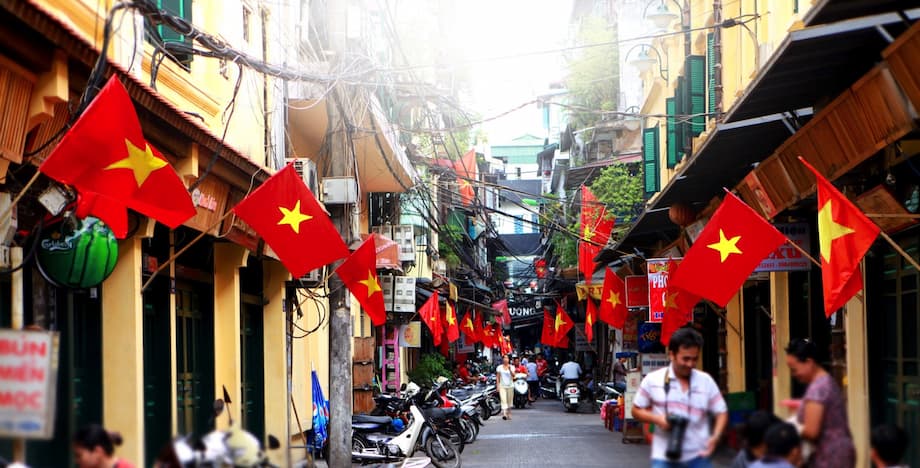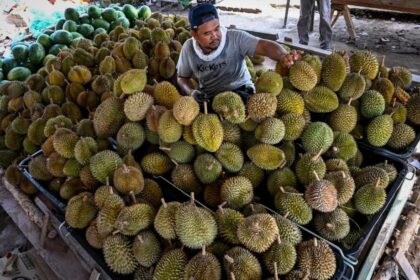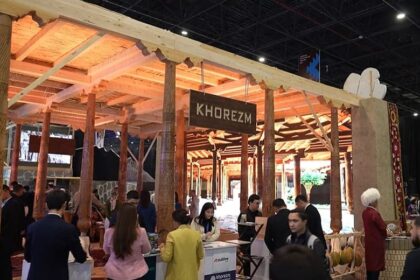Vietnam Celebrates 80 Years of Independence as French Legacy Lives On in Banh Mi and Beyond
French colonial influence remains visible in Vietnamese architecture, language, and especially cuisine, as the nation marks a milestone anniversary.
On September 2, 2025, Vietnam commemorates the 80th anniversary of its declaration of independence from French colonial rule. The event, marked by a massive military parade in Hanoi’s Ba Dinh Square, recalls the historic moment when revolutionary leader Ho Chi Minh proclaimed independence in 1945. While the declaration was intended to end nearly a century of French domination, it sparked a decade-long conflict that only concluded with the French withdrawal in 1954. Today, the echoes of that colonial era are still present, most notably in the country’s architecture, language, and food—nowhere more deliciously than in the beloved banh mi sandwich.
- Vietnam Celebrates 80 Years of Independence as French Legacy Lives On in Banh Mi and Beyond
- French Colonialism: A Brief History and Its Lasting Imprint
- From Baguette to Banh Mi: The Culinary Fusion That Defines Vietnam
- Beyond Banh Mi: The Broader French Culinary Legacy
- Modern Vietnam: Independence, Identity, and International Appeal
- Why Many Young Vietnamese Don’t Recognize the French Roots
- What to Know
Despite the enduring presence of French cultural elements, many young Vietnamese are unaware of their origins. Interviews with Hanoians under 30 reveal surprise at the French roots of iconic buildings and foods. Yet, as Vietnam’s relationship with France has evolved from colonial subjugation to diplomatic partnership—highlighted by recent multi-billion-dollar trade deals—the legacy of French influence continues to shape daily life in subtle and profound ways.
French Colonialism: A Brief History and Its Lasting Imprint
The French presence in Vietnam began in the 17th century with Catholic missionaries and traders, but it was not until the late 19th century that France formally colonized the region, establishing French Indochina in 1887. Over nearly 70 years, the French imposed their language, architecture, and culinary traditions on Vietnamese society. The colonial administration built grand structures in Hanoi and Saigon (now Ho Chi Minh City), including the presidential palace, foreign ministry, Notre Dame Cathedral, and the Central Post Office. These buildings, with their neoclassical facades and ornate flourishes, remain prominent landmarks today.
Yet, as Vietnam celebrates its independence, the younger generation often overlooks the colonial origins of these sites. Nguyen Thi Trang, a 30-year-old visitor to Hanoi’s foreign ministry headquarters, expressed surprise when told of its French architectural heritage, noting she was drawn by its unique style and celebrity endorsements rather than its history.
Language, too, has shifted. French was once the language of the elite, but today, English, Chinese, Japanese, and Korean are rapidly gaining ground. Only 400 high school students chose French for their graduation exams this year, compared to over 358,000 for English. Still, the French embassy in Hanoi reports that 63,000 people are enrolled in French language classes, and the language retains a certain prestige.
From Baguette to Banh Mi: The Culinary Fusion That Defines Vietnam
Perhaps the most enduring and beloved legacy of French colonialism in Vietnam is found in the kitchen. The French introduced ingredients and techniques that Vietnamese cooks adapted and transformed, creating new dishes that are now national treasures. The banh mi sandwich is the most iconic example of this culinary fusion.
The word “banh mi” in Vietnamese literally means “bread,” but it has come to signify a specific type of sandwich made with a light, airy baguette. The French brought the baguette to Vietnam, but local bakers modified the recipe, often adding rice flour to create a softer, spongier texture better suited to the humid climate and local tastes. This adaptation made the bread more affordable and accessible, especially after World War I, when imported wheat became scarce and expensive.
Historically, the French colonial diet was used to reinforce social hierarchies, with French residents maintaining European eating habits and discouraging culinary exchange. However, economic necessity and changing times led to greater accessibility of European foods among the Vietnamese population. During World War I, seized German goods—including cold cuts, cheeses, and bread—were sold in Saigon, introducing many Vietnamese to these ingredients for the first time.
The modern banh mi emerged in the 1950s, after the French defeat at Dien Bien Phu and the end of colonial rule. Southern Vietnamese cooks began filling baguettes with local ingredients—pickled vegetables, fresh herbs, and a variety of meats—making the sandwich affordable and portable. The Le family, owners of Banh Mi Hoa Ma in Saigon, are credited with popularizing the practice of stuffing the bread with fillings, rather than serving them on the side as the French did.
What Makes a Banh Mi?
A classic banh mi is a symphony of textures and flavors:
- Bread: A Vietnamese-style baguette, lighter and airier than its French counterpart, often made with a mix of wheat and rice flour.
- Spread: Mayonnaise (a French import, often replacing butter) and sometimes a smear of liver pâté.
- Protein: Options include grilled pork, lemongrass chicken, Vietnamese ham (cha lua), meatballs, eggs, or tofu for vegetarians.
- Pickled Vegetables: Daikon radish and carrots, providing tangy crunch.
- Fresh Vegetables and Herbs: Cucumber slices, cilantro, and jalapeños or chili peppers.
- Seasonings: Maggi seasoning sauce, soy sauce, or fish sauce for an umami kick.
This blend of French and Vietnamese elements creates a sandwich that is both familiar and unique, reflecting the country’s history of adaptation and innovation.
Beyond Banh Mi: The Broader French Culinary Legacy
The French influence on Vietnamese cuisine extends far beyond banh mi. Cafés serving strong, sweet coffee with condensed milk (cà phê sữa đá) line the streets of every city—a tradition that began when French missionaries introduced coffee in the 19th century. Croissants, pâté, and other pastries are staples in Vietnamese bakeries. Even the beloved noodle soup pho may have roots in the French dish pot-au-feu, according to some culinary historians.
French techniques and ingredients were not simply adopted wholesale; they were adapted to suit local tastes and resources. Butter, for example, was often replaced with mayonnaise, which is more stable in Vietnam’s heat. The use of fresh herbs, pickled vegetables, and local meats transformed European-style dishes into something distinctly Vietnamese.
Nguyen Van Hoan, a 60-year-old bakery owner in Hanoi, acknowledges the French legacy in the Vietnamese love for bread but emphasizes the importance of adaptation. “French cuisine has had to adapt to match Vietnamese tastes to survive,” he explains.
Modern Vietnam: Independence, Identity, and International Appeal
Vietnam’s journey from colonial rule to independence has been marked by resilience and creativity. The country’s ability to absorb and transform foreign influences is evident in its architecture, language, and especially its food. As Vietnam’s economy grows and its cities modernize, the French legacy remains visible but is increasingly woven into a broader tapestry of global influences.
Recent years have seen a surge in international interest in Vietnamese cuisine, with banh mi leading the charge. Food trucks, restaurants, and festivals around the world celebrate the sandwich’s unique blend of flavors. The annual banh mi festival in Ho Chi Minh City attracts tens of thousands of visitors, both local and foreign, eager to sample traditional and innovative versions of the sandwich. Foreign tourists, like Will Courageux from France and Keiichi from Japan, express admiration for the variety and creativity of Vietnamese banh mi, noting the differences from the French original and the abundance of fillings available in Vietnam.
The global spread of banh mi is also a story of migration. After the fall of Saigon in 1975, many Vietnamese fled abroad, bringing their culinary traditions with them. Banh mi shops sprang up in cities like San Diego, Houston, Seattle, and Paris, adapting the sandwich to local tastes and ingredients. Today, banh mi is enjoyed worldwide, a testament to Vietnam’s cultural adaptability and the enduring appeal of its food.
French Influence in Everyday Life
While the French language may be fading, the cultural legacy persists in daily routines. Many Vietnamese start their day with a banh mi from a street vendor or a cup of strong coffee at a sidewalk café. The architecture of government buildings, churches, and theaters continues to shape the urban landscape. Even as new languages and cultures gain influence, the French imprint remains a subtle but significant part of Vietnamese identity.
Why Many Young Vietnamese Don’t Recognize the French Roots
Despite the omnipresence of French-inspired foods and buildings, many young Vietnamese are unaware of their colonial origins. This is partly due to the passage of time—80 years have passed since independence, and the country’s population is overwhelmingly young. For many, banh mi and baguettes are simply part of everyday life, not relics of a colonial past.
Education and popular culture also play a role. As English and other languages become more dominant, and as Vietnamese cuisine is celebrated for its uniqueness, the foreign origins of certain dishes are often overlooked. For some, acknowledging the colonial roots of beloved foods may feel uncomfortable or irrelevant to modern identity.
Yet, as Vietnam continues to engage with the world, there is growing interest in exploring and celebrating the country’s complex history. Food festivals, travel blogs, and culinary tours increasingly highlight the fusion of French and Vietnamese influences, inviting both locals and visitors to appreciate the rich tapestry of flavors and stories behind each bite.
What to Know
- Vietnam marks 80 years of independence from French colonial rule on September 2, 2025, with major celebrations in Hanoi.
- French influence remains visible in Vietnamese architecture, language, and especially cuisine, despite declining awareness among younger generations.
- The banh mi sandwich, made with a Vietnamese-style baguette and a variety of fillings, is the most iconic example of French-Vietnamese culinary fusion.
- French culinary techniques and ingredients were adapted to local tastes, creating unique dishes like banh mi, Vietnamese coffee, and pastries.
- Banh mi has become a global phenomenon, celebrated at festivals and enjoyed in cities around the world.
- Vietnam’s relationship with France has evolved from colonial subjugation to diplomatic partnership, with ongoing cultural and economic ties.
- Many young Vietnamese are unaware of the French origins of everyday foods and buildings, reflecting the passage of time and changing cultural priorities.












